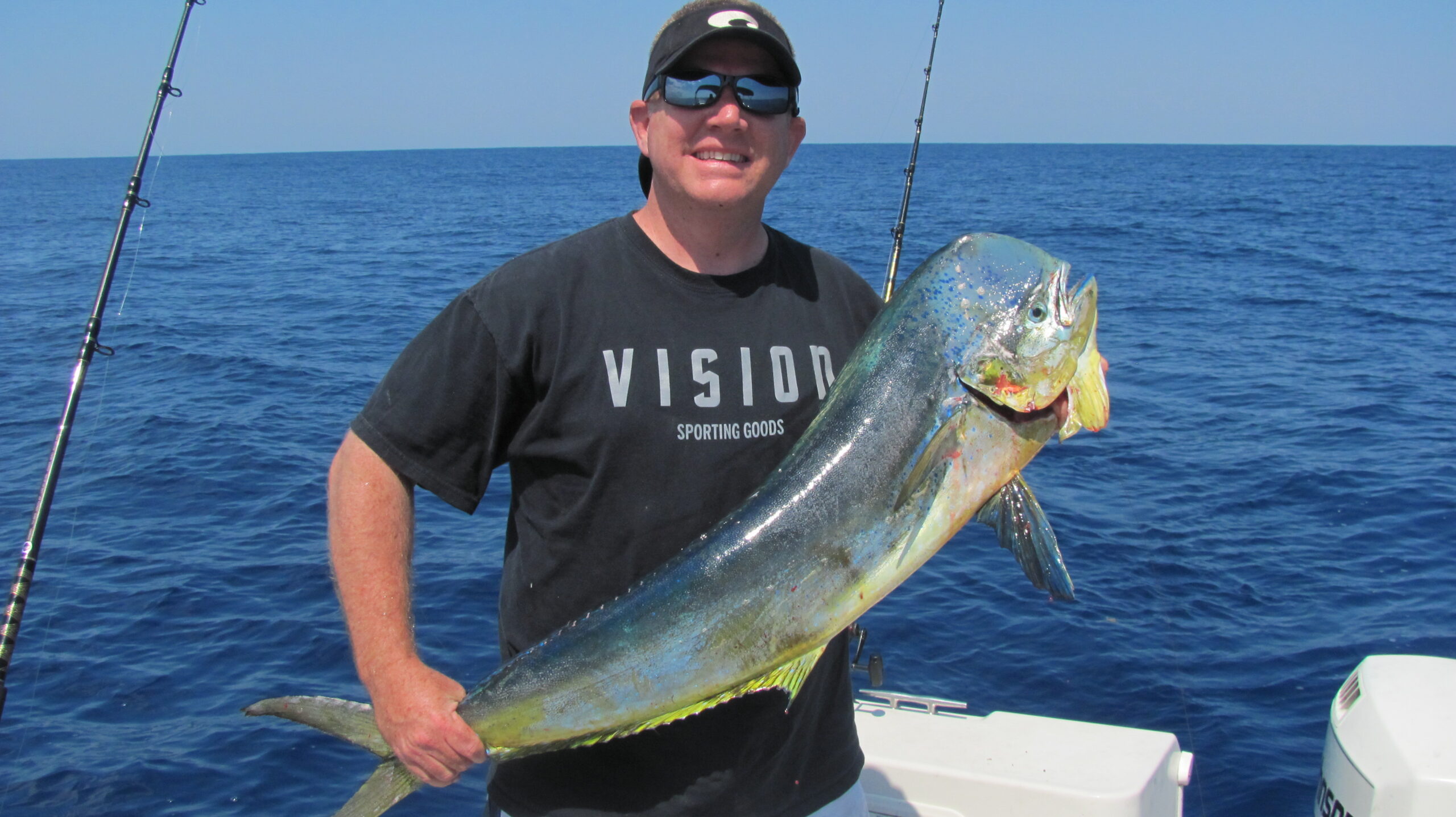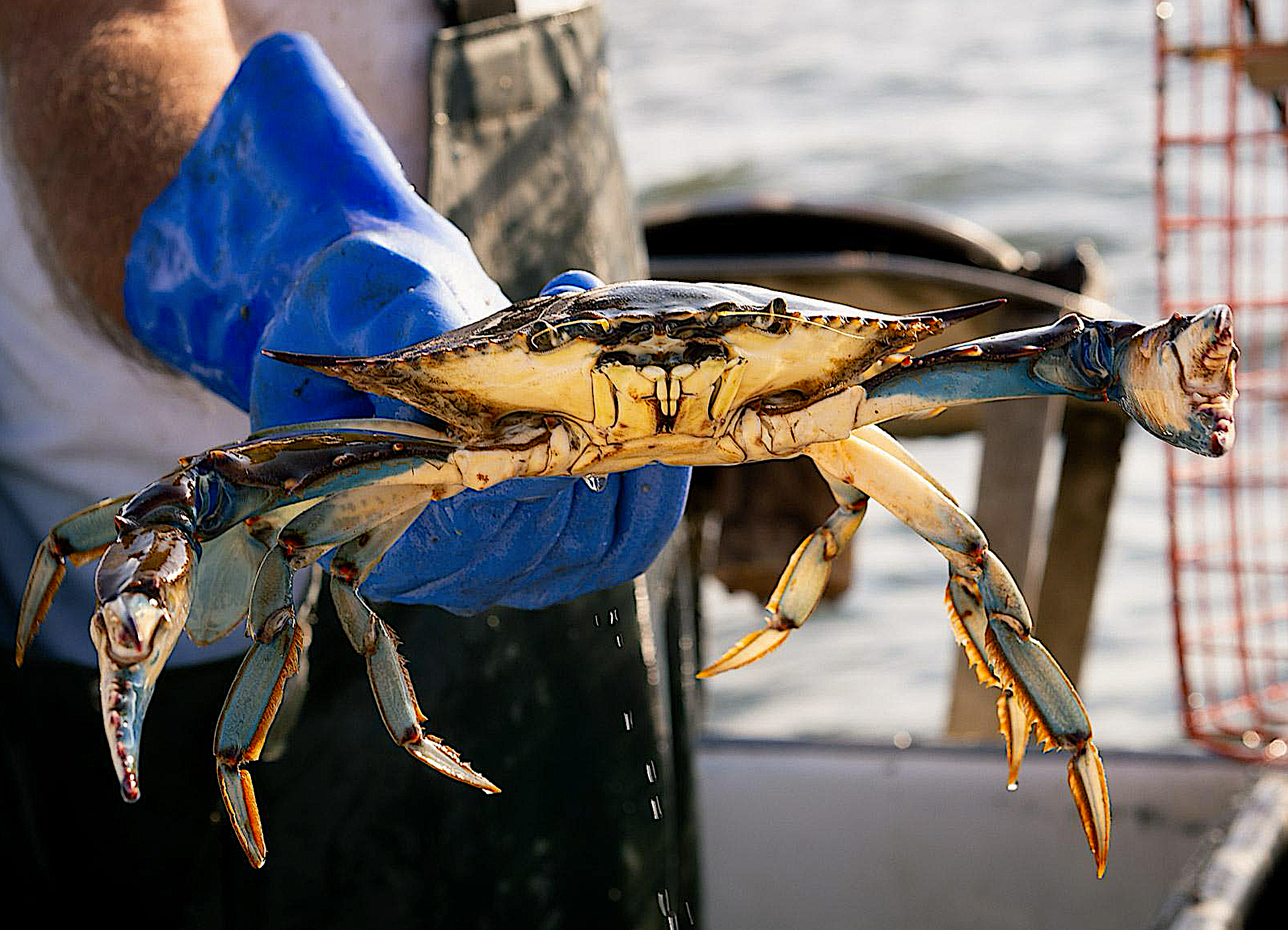What Depth and Water Temperature Do Mahi-Mahi Prefer?

Satellite-tagged mahi-mahi spend about 40% of their time near the surface and 95% of their day in water 77 to 84°F.
A quick search online reveals that many anglers want to know the best water temperature to target mahi-mahi, also known dolphinfish (Coryphaena hippurus). We found answers tucked within a larger study on mahi-mahi spawning behavior.
Research Need
Mahi-mahi are difficult to study because they’re fast-growing, short-lived animals that occur offshore and migrate long distances. Scientists and fishers have a general understanding of the fish’s preferences for water temperature, but they lack detailed data on fish movement in relation to changing environmental conditions.
Satellite tags can provide scientists with a wealth of information about day-to-day activities of marine organisms. These tags are attached to an animal and collect data at specified intervals; eventually they pop off and float to the surface, where they transmit data to a special satellite. Satellite tags that collect accelerometer data — a proxy for fish movement in the water column — can provide valuable insight into fish behavior.
What did they study?
The Florida-based research team was interested in determining the spawning behavior of mahi-mahi in the wild; a summary of the findings, along with a slideshow, can be found at this link. As part of that study, the researchers collected information on temperature and depth preferences of mahi-mahi through electronic tagging.
The team satellite-tagged two mahi-mahi off of Venice, Louisiana, and 17 fish off of Miami, Florida, from 2016 to 2018. The tags collected data on depth, temperature, and raw acceleration every 5 minutes for up to 96 days. Once a tag detached and drifted to the surface, it beamed back data to the researchers.
What did they find?
Mahi-mahi spent about 40% of their time within 3 feet of the surface but periodically explored depths as great as 820 feet.
The fish also spent 95% of the study period in sea surface temperatures between 77 and 84°F but seemed to prefer waters between 80 and 82°F while migrating northward (for example, when traveling from southern Florida to the mid-Atlantic region). To remain in near-constant water temperatures, fish shifted to deeper depths as sea surface temperatures warmed.
Below a sea surface temperature of 77◦F, fish remained very close to the surface during the day. At night, fish remained close to the surface during the full moon but made more frequent deep dives as moonlight decreased.
At sea surface temperatures of 77◦F and above, fish activity was moderate and decreased as temperature warmed further. At these water temperatures, nighttime fish activity increased as moonlight increased.
So what?
The data collected in this study seems to support the findings of a study profiled here earlier, where daytime mahi-mahi catch-per-unit-effort was lowest during the full moon phase and highest during the first-quarter phase of the moon.
The researchers hypothesize that nighttime feeding success or failure may influence where mahi-mahi will spend their following hours in the water column.
Anything else?
Almost 75% of tagged mahi-mahi were eaten by another organism. In general, mahi-mahi grow fast, lead short lives, and are popular prey to larger marine species.
As the oceans warm, the researchers expect that mahi-mahi will expand their range toward higher latitudes. This could mean that mahi-mahi will eventually be spending more time off the North Carolina coast.
Reading
Schlenker Lela S., Faillettaz Robin, Stieglitz John D., Lam Chi Hin, Hoenig Ronald H., Cox Georgina K., Heuer Rachael M., Pasparakis Christina, Benetti Daniel D., Paris Claire B., Grosell Martin. 2021. Remote Predictions of Mahi-Mahi (Coryphaena hippurus) Spawning in the Open Ocean Using Summarized Accelerometry Data. Front. Mar. Sci., 09 March 2021 | https://doi.org/10.3389/fmars.2021.626082.
Summary compiled by Scott Baker
Photo: A mahi-mahi caught off the coast of Hatteras Island. Photo by Qbx101/Wikimedia Commons/CC BY-SA 3.0
The text from Hook, Line & Science is available to reprint and republish, but only in its entirety and with this attribution: Hook, Line & Science, courtesy of Scott Baker and Sara Mirabilio, North Carolina Sea Grant. HookLineScience.com
- Categories:



